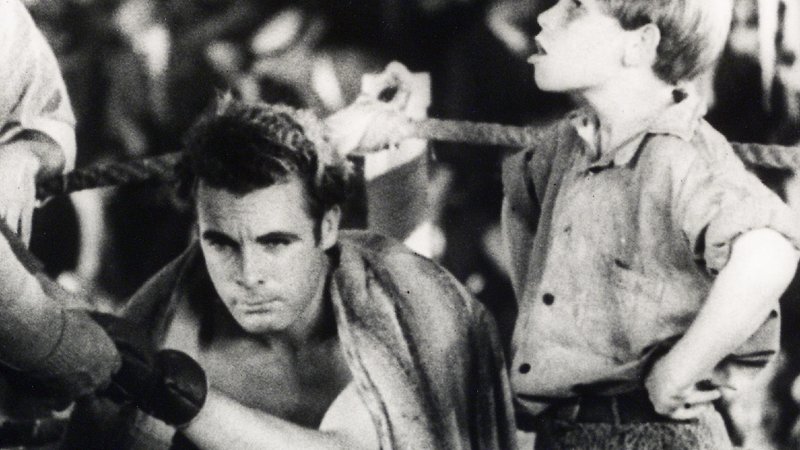
Screened as part of NZIFF 2001
The Shakedown 1928
Re-discovering the early work of great directors is one of the pleasures of archival film festivals, and 2000's Pordenone Silent Film Festival thrilled its audience with this absolute gem by William Wyler – previously believed lost, but recently restored by the film archive of George Eastman House from collector Jerry Haber’s 16mm print.
Wyler cut his teeth on low-budget westerns, but The Shakedown broke the pattern with its contemporary urban story of an itinerant oil-drill worker who moonlights as a professional ‘patsy’ (a crooked boxer who makes a reputation and then throws his fights), but is reformed by the love of a waitress and an orphan boy. The film opens with 20 minutes of breathtaking camerawork and continues with fast-paced virtuoso storytelling (and, for connoisseurs of such things, Wyler himself appears in a boxing sequence, holding a numbered card upside down). — Clyde Jeavons, London Film Festival 1999
If it’s not a masterpiece it comes pretty close. The film opens with 20 minutes of breathtaking camerawork – and eerie echoes of Paul Fejos’ Lonesome: Barbara Kent in an amusement park! – as a poignant romance between a waitress and an oil drill worker, ending up as an unlikely tale of male bondage. — Paolo Cherchi Usai
William Wyler was the nephew of Carl Laemmle, head of Universal Pictures, and one of the many family members taken in by Uncle Carl and given a chance to start fresh in America. Laemmle despaired of him as he didn’t seem to be good at anything but raising hell and chasing girls. He finally tumbled into directing with two reel westerns with pretty good results. The front office took notice and his assignments grew in importance, length and complexity. The Girl Show was Wyler’s first non-western assignment, but was temporarily abandoned due to casting problems. The script was eventually combined with an adaptation of a Damon Runyon story called The Geezer and was re-written as The Frame-up. This then became Wyler’s second non-western feature, The Shakedown. Six months of re-writes were required before filming could begin in July of 1928. Wyler had to be pressured into accepting the assignment by Universal General Manager, Henry Henigson. Costing about $50 000, The Shakedown was released in March 1929 in two versions: silent and part-talkie (to date only this silent version is known to have survived). The reviews were mixed but The Shakedown was one of the few Universal productions that year to turn a profit. — Adapted from notes supplied by Caroline Yaeger, George Eastman House